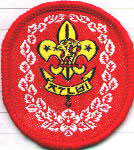Human Flower Project
Wednesday, January 25, 2006
Korea’s Lovely Kkotminam
Drawing on ancient chivalry, modern soap operas and cash, South Korean males are proud to be called “flower men.”

Bae Yong Joon, #1 Flower Man
Photo: Dear Bae Yong Joon
Never having mastered the eyelash curler, we are indeed impressed by South Korea’s “kkotminan” —“flower boys.” These are the buffed male beauties of Seoul, nattily dressed, manicured and pretty as a picture.
Even before Salon magazine coined the term metrosexual, the boys of Asia were sampling skin creams and eyebrow pencils. In China, the “‘ai-mei nanren’ (love-beauty men), are spending their rising disposable incomes in beauty salons,” and on cosmetics, an industry whose sales in China rose 8% in 2003.
 Movie star Kwon Sang Woo
Movie star Kwon Sang Woo
tenderly flogs skin-creams for The Face Shop
Photo: blog 360
But Korea has led the way. “South Korea is rightfully famous in Asia for its pursuit of beauty. Seoul’s plastic surgeons, fashion boutiques, hairdressers and cosmetics merchants attract customers from throughout the region. People in the industry attribute the phenomenon to an ultra-competitive society, especially when it comes to jobs.”
South Korea also boasts two flower men (Kkotminam) with especially maniacal fans: Soccer star Ahn Jung-hwan has been knocking out cosmetic ads as well as knocking in goals. And TV star Bae Yong Joon (bearing some resemblance to Winona Ryder) has become a continental sensation.
Bae portrayed a “bespectacled, shaggy-haired and turtleneck-loving architect” in a serial called “Winter Sonata,” a drama crowded with all the plot devices of love comics, even, oh my, amnesia.
Rina Jimenez-David, writing for the Philippine Daily Inquirer, contends “The ‘flower man’ is every woman’s idealized lover: faithful and persevering, intelligent and sensitive, and yet also manly and authoritative, not to mention wealthy, well-educated and gentle of manner.”
Now that you mention it…sounds nice.
We also have learned of a much older breed of masculine flora in Korea. The Hwarang (flower knights) were a band of scrupulous warriors organized by King Chinhung 2000 years ago. Set apart in Korea’s beautiful wilds, they learned “to develop patience, mental and emotional control….” The Flower Knights were trained in both martial arts and beaux-arts. “Besides religious instruction, the Hwa Rang were taught dance, literature, the arts and sciences. They were also taught the art of warfare, archery, self defense skills…. Based upon the concept of the unity of opposites embodied in the um-yang, the empty-handed fighting techniques were known for their blending of the hard and soft, linear and circular attacks.”
 Korean Boy Scout merit badge
Korean Boy Scout merit badge
with Mugungwha, the national flower
Would these ancient archers have shopped for mascara? We’re not sure. (Certainly, Korean women’s 20-year march into the workforce has bent genders as much as 7th century archers ever could.) Still, it seems quite plausible that Korea’s legacy of knights in flower, “hard and soft,” made way for the supple Kkotminan of today.
Consider: In South Korea, the Boy Scouts even give a floral merit badge.




